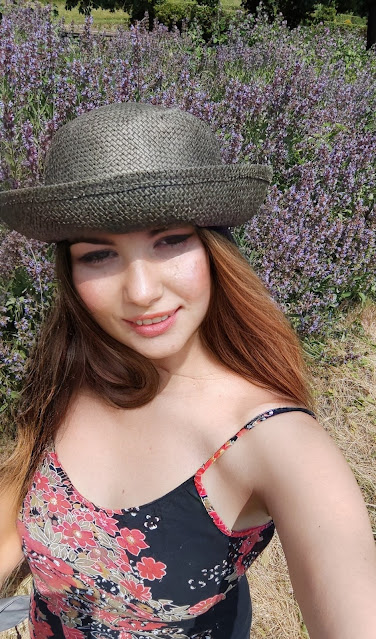Rafael Ferrer at Freddy
Artist: Rafael Ferrer
Venue: Freddy, Harris
Exhibition Title: Mantic Faces
Date: July 9 – 29, 2017
Full gallery of images, press release and link available after the jump.
Images:
Images courtesy of Freddy, New York. Photos by Harry Gould Harvey IV of Newport.
Press Release:
This text is excerpted from an essay by Carter Ratcliff, titled Rafael Ferrer in the Tropical Sublime. The essay was published first by the Contemporary Arts Center, Cincinnati in 1973, and later in the catalogue for Retro/Active: The Work of Rafael Ferrer at El Museo del Barrio, New York curated by Deborah Cullen, June 8 – August 22, 2010.
MANTIC FACES
The protean elusiveness of Ferrer’s restlessly evolving self-consciousness will be our guiding topic from now on, and nowhere is that elusiveness more plainly visible than in the faces he draws on paper bags. Are these masks behind which unknown presences hide when the artist approaches? Do these faces represent Ferrer himself at the outer edges of discovery? We’ve seen that these interpretations are not opposed, both can be correct. Explorer and explored are nearly one. There are more interpretations possible, hence certain questions. Why are there so many masks? Why the different sizes, the seeming lack of pattern in developing variations? Why are the faces’ expressions so hard to pin down? For it is clear that Ferrer is not taking an inventory of the familiar emotions in this series of works.
Shamans are to be found throughout history, in widely separated cultures. They entered Western culture in the 7th century when Greek trading and colonizing expeditions to the Black Sea encountered the shamanistic practices of the local tribes. These rituals originated in the individual, not in a social collective—an important point to bear in mind when we are drawing comparisons between shamans and modern artists in the Romantic tradition. Divination, healing, visits to the spirit world, spells to banish pestilence, eternal life—all these are within the shaman’s power. His chief method is the projection of the soul from the body. Riding on an arrow or a drum, the shaman’s soul can see things not visible to the ordinary eye, and of course the soul returns from its explorations to tell what it has discovered.
If the projected soul is the shaman’s symbol of his intuitive, visionary powers, it can be found transformed in the Romantic artist’s imaginative, creative powers. Though creation may ultimately be the creation of oneself, it is accomplished by sending an exploratory self out into the world—a process Ferrer symbolizes with complex images of travel and its effects on the traveler. His faces are his most direct images of creative “projection,” and yet they are ambiguous. They represent visions seen by the voyaging soul, but they also represent the mantic, divinatory heads from which the soul has departed. Ferrer has projected an image of himself by recreating the world. A further transformation: the shaman’s divinations are usually in the form of speech; mantic energies are made visible in these faces, hence what is divined becomes an object in the revealed world.
If one chooses to see an Eskimo or an African mask in one of these faces, one must allow that it represents both the discovery of such an artifact and its effect on the discoverer (who may, at this point in the discussion, be seen either as an explorer from the Western world or a shaman-explorer in his own non-Western or pre-Classical setting). If one chooses to see German Expressionism, Constructivism, or children’s art in these faces, the same ambiguities appear: is one encountering new aspects of these styles or their reflection back into the imagination of the discoverer?
Given that Ferrer’s art is about creation, then the faces are perhaps not images of anyone or anything, not any spirit, faculty, demon, memory, or dream. They are, in their restless variety, images of the indefinable—of creation itself, of the changes felt by the individual as, self-consciously, he defines himself.
—Carter Ratcliff
Ferrer has had solo exhibitions at the Philadelphia Museum of Art (1970); Whitney Museum of American Art, New York (1971); Institute of Contemporary Art, Philadelphia (1971 and 1979); and Museum of Modern Art, New York (1974). A major traveling retrospective of his work was organized by El Museo del Barrio, New York, in 2010. Ferrer participated in in the important group exhibitions Live in Your Head: When Attitudes Become Form, Kunsthalle Bern (1969, recreated at the Fondazione Prada, Venice, 2013); and Op Losse Schroeven, Stedelijk Museum, Amsterdam (1969). He has also exhibited at the Whitney Museum of American Art, New York (1969 and 1984); Museum of Modern Art, New York (1970 and 1984); Corcoran Gallery of Art, Washington, D.C. (1971); and Museum of Contemporary Art, Chicago (1971 and 1972). His work was featured in the Whitney Biennial, New York, in 1972 and 1981. He has also received commissions for public art projects in the Bronx, New York (1979), Philadelphia (1982 and 2013), and Puerto Rico (2004). Ferrer is the recipient of several grants, including three from the National Endowment for the Arts (1972, 1975, and 1989). He lives and works in Long Island, New York, and Vieques, Puerto Rico.
Link: Rafael Ferrer at Freddy
Contemporary Art Daily is produced by Contemporary Art Group, a not-for-profit organization. We rely on our audience to help fund the publication of exhibitions that show up in this RSS feed. Please consider supporting us by making a donation today.
from Contemporary Art Daily http://bit.ly/2veVxkj

Комментарии
Отправить комментарий